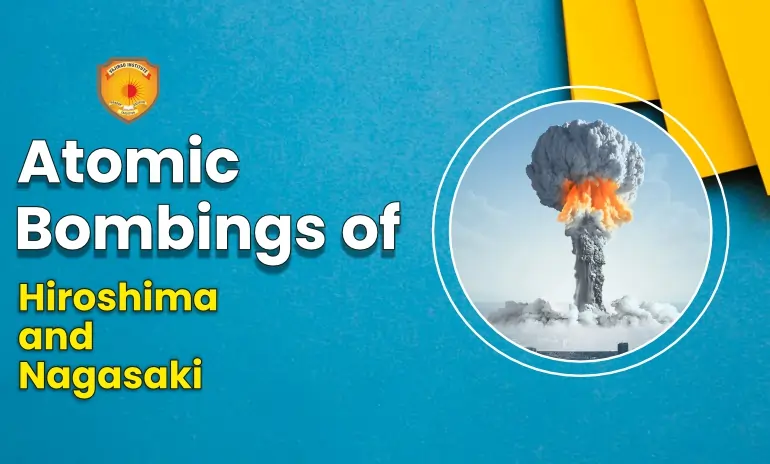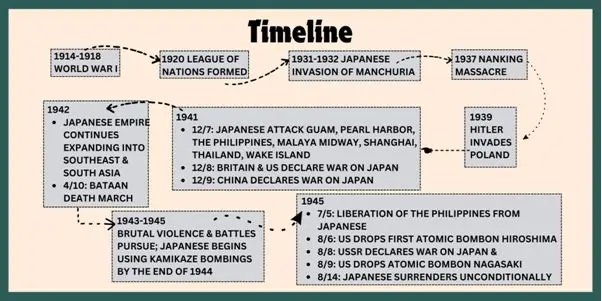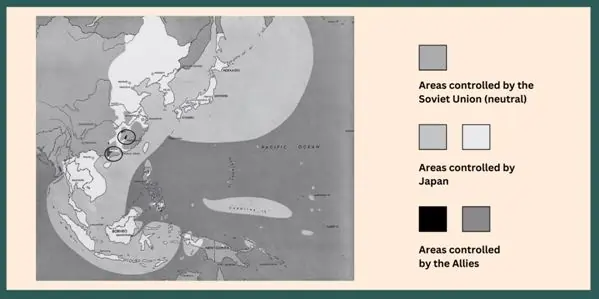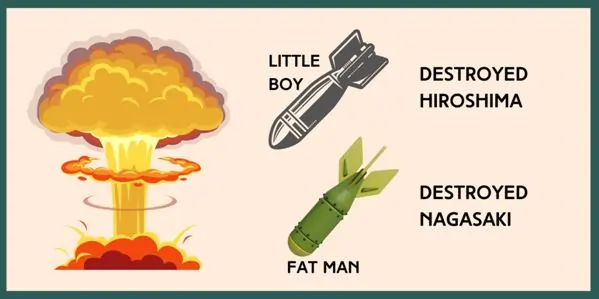
Why US Attacked Japan ?
In 1939, the Second World War had started in Europe. With the establishment of German control over the Netherlands in France in 1940, Japan accepted the victory of the Axis powers (Germany and Italy) as certain. In 1940, Japan entered into a Tripartite Pact with Germany and Italy declaring that it would oppose the West. With the USSR japan signed a treaty of non-aggression in the year 1941. In this way, Japan ensured the security of its northern borders in China and could now move freely southwards towards the French, Dutch and British colonies.
The United States was very dissatisfied with Japan's expansionist policies. In 1940, the Japan-US trade treaty was allowed to lapse. When the Tripartite act was signed in 1941 by Japanese there next target was indo-china. America, Britain and Holland imposed complete control on exports to Japan. This decision had a severe impact on the supply of oil and rubber to Japan. America also imposed a ban on the export of goods of strategic importance to Japan because Japan's war and cargo industries depended on these goods. These goods were iron and oil.
It was necessary for the army to get out of the sanctions imposed by the Western nations. In 1941, talks were held between Japan and America but these talks remained deadlocked because no party was in favour of compromise. America demanded that Japan should not only vacate the Indo-China region but it should also withdraw from China. But Japan was also determined that America should lift the ban on the supply of oil and recognise Japan's supremacy in the Far East and stop supporting Chiang Kai-shek.
Japanese military officials agreed that war with America was inevitable and plans should now be made in this direction. In October 1941 when it was evident that the war was inevitable Japanese make Tojo Hideki there PM. Japan thought it better to adopt the option of war instead of leaving China. Now war had become not only a source of power display for Japan but also an economic necessity.
By this time Japan had also prepared a plan to convert the entire South East Asia into a Greater East Asia Co-Prosperous Region. Both South and South East Asia was included in this plan. After joining the Axis powers, Japan was very eager to implement its plan.
Second World War

Last efforts were made to avoid war. To stop its aggression, Japan demanded that America withdraw from China and grant it huge economic concessions. America refused to accept its demands and in December 1941, the Japanese Imperial Conference of Civil and Service Leaders declared war on America. On 7 December 1941, Japan made a surprise attack at Pearl Harbour and conquered it. Japan razed the Philippines and took over Hong Kong, Singapore and Indonesia. Japanese forces reached Burma and took over it and Japan started planning to take over India. By mid-1942, Japan had taken control of the area from Rangoon to the middle of the Pacific Ocean and from Timor to the desert of Mongolia.
In this war in the Pacific Ocean, Japan suffered immense loss of property, life and wealth till 1945,after the defeat at Pearl Harbour, America was determined to crush Japan.
In January 1943, the Allied leaders met at Casa Blanca and decided to strengthen their efforts against Japan. In Gilbert Japan lost too many strategic points and japan lost in Marshall Islands too. The Allies deployed two powerful military commands against Japan, one of which captured Saipan in the Maritimes in June and Jima in March 1945, while the other captured the Philippines in February 1945. From here, the two commands jointly took military action against Japan and their target was now Okinawa, which they captured in June 1945.
The Allied forces knocked at Japan's door and reached an area from where Japan could be bombed. Since 1944, the Allied forces had been continuously bombing Japan and due to this many Japanese cities were bombed, thousands of civilians were killed and billions of dollars’ worth of property was destroyed. According to the Potsdam Declaration of July 26, 1945, Japan was declared to surrender without any conditions and after this there was a provision for taking over its army, its demilitarization and evacuation of its territory. Atom bombs were dropped on Hiroshimaand Nagasaki on August 6 and 9 and Japan accepted its defeat and surrendered on August 15, 1945.

The bomb that the US dropped on Hiroshima was named Little Boy while the bomb dropped on Nagasaki was named Fat Man. This US attack killed 140,000 people in Hiroshima and about 74,000 in Nagasaki.. The uranium bomb detonated on Hiroshima on 6 August 1945 had an explosive power equivalent to 15,000 tons of TNT. It destroyed and burned about 70 percent of buildings and caused an estimated 140,000 deaths by the end of 1945, as well as increased rates of cancer and chronic diseases among survivors. Three days later, a large plutonium bomb exploded over Nagasaki, destroying 6.7 square kilometres of the city and killing 74,000 people by the end of 1945. The ground temperature reached 4,000 degrees Celsius and radioactive rain began. Studies have shown that black rain was highly radioactive and exposure to this rain can cause a variety of serious illnesses. A study conducted in 1945 shows that black rain fell over an area of about 29 km from ground zero. This rain contaminated everything that came in contact with it. The black rain caused acute radiation symptoms (ARS) in many people. Some people developed cancer while others lost their eyesight. The city's land and water were also contaminated by radiation.
Warnings by Japanese radars
Japanese radars indicated American planes coming from the south at 7 am on August 6, 1945, due to which the warning siren started. Colonel Paul Tibbets of the US Air Force dropped Little Boy over Hiroshima from his B-29 plane at 8:15 am and the bomb took only 43 seconds to come down. However, the bomb fell 250 meters away from its targeted Location.
Kyoto was targeted first
America targeted Kyoto because there were many major universities in this city. Many big industries were operated from the city. Apart from this, 2000 Buddhist temples and many historical heritages sites were present in this city. Considering the importance of Kyoto, Kyoto was chosen as the first target of the atomic bomb attack. However, War Secretary Henry Stimson was also adamant on his insistence. He went directly to US President Henry Truman and demanded to remove it from the target list.

Little Boy destroyed Hiroshima
The atomic bomb named Little Boy that America dropped on Hiroshima, Japan, weighed about four tons i.e. four thousand kilos. This Little Boy was filled with about 65 kilos of uranium. This bomb was dropped from a plane named Enola Gay, whose pilot was Paul Tibbets. America wanted to drop this bomb on Japan's Aoi Bridge, however, due to falling at a distance from the target, lakhs of people lost their lives and many thousands were injured. At the time when the atomic bomb was dropped, the temperature of Hiroshima reached four lakh degrees Celsius.
Fat Man destroyed Nagasaki
Three days after Hiroshima, America attacked another Japanese city, Nagasaki, with an atomic bomb named Fat Man. About 74,000 people were killed in this attack. Fat Man, weighing 4500 kilos, was filled with 6.5 kilos of plutonium.